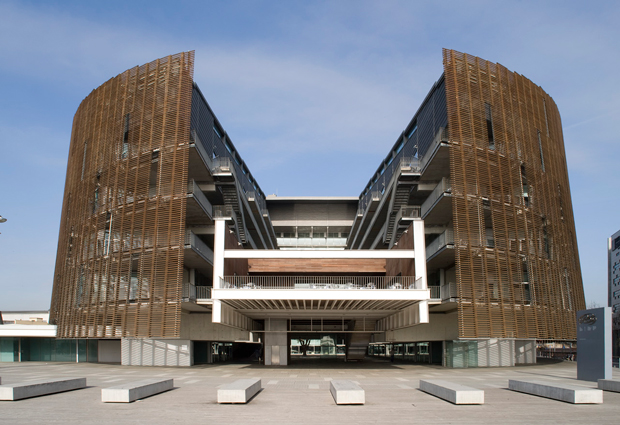
The story behind EMBL’s Barcelona site
EMBL Director General, Iain Mattaj, reflects on the work done to establish a new EMBL site in Barcelona

Spain hosting an EMBL site has been on my mind almost from my first days as Director General of EMBL. When I first visited the Ministry of Economy, Industry and Competitiveness (MINECO) in Madrid at the end of 2005, it was already very clear that they were keen to develop deeper links with us, up to and including hosting an EMBL site.
From the beginning of the discussion, in 2011, there was a high level of support within EMBL’s governing body, EMBL Council, for the idea of an EMBL site in Barcelona focussing on tissue biology and disease modelling. Within this area, there are many topics which are related and could act synergistically with our strategy and strengths in other areas, such as cell biology and biophysics, developmental biology, genome biology and bioinformatics. From the beginning the proposed focus felt right.
Spain hosting an EMBL site has been on my mind almost from my first days as Director General of EMBL
The research in Barcelona will be both distinct from and complementary to that of the other parts of EMBL. It combines the development of new types of imaging – of large objects, and of imaging deeply into these objects with light microscopy – with research on the behaviour of groups of cells and the differentiation of individual tissues. The light sheet microscopy that was first developed at EMBL Heidelberg, for instance, complements the type of 3D imaging, optical projection tomography, which was developed in Barcelona. The partnership unit between EMBL and the Centre for Genomic Regulation (CRG) has built up a very strong background in computational biology, and the combination of quantitative imaging and computational modelling is an area of research in which we expect many biological and medical breakthroughs in the future.
There are a number of diseases and developmental problems that are caused not necessarily by individual cells, but by cells collectively not producing the right form for an organ or a tissue. A very simple example is type 1 diabetes, in which the immune system attacks and damages cells that normally produce insulin. Improved imaging of these cells in the pancreas, in conjunction with computational modelling of their mechanisms, contributes to a greater understanding of how this auto-immune attack affects the pancreas. Further, it could lend insight into how to treat type 1 diabetes patients.
The research in Barcelona will be both distinct from and complementary to that of the other parts of EMBL
Since we developed the idea of tissue biology being the focus at the Barcelona site, there has been an explosion of research on organoids, or very complex tissue culture systems that mimic organs such as parts of the intestine, parts of the kidney, or parts of the brain. These complex cell systems can be manipulated and imaged in ways that whole organisms are not amenable to.
Barcelona has very strong universities and scientific institutes with complementary expertise that we look forward to collaborating with. Our long-standing partner, the CRG, for example, is one of the world’s leading centres in fundamental biomedical sciences. In addition, next door to the EMBL Barcelona site in the Barcelona Biomedical Research Park is a research hospital, which will enable direct links to clinical research.
It is for all the above reasons that Barcelona seemed like the right place for a new EMBL site. The Spanish and Catalonian governments as well as the CRG have been outstandingly supportive and cooperative in developing the detailed scientific plan for the site, working on a host site agreement and discussing space and infrastructure of the site. Working with them has really been a pleasure throughout this time, and I look forward to this continuing relationship as the site is set up.


